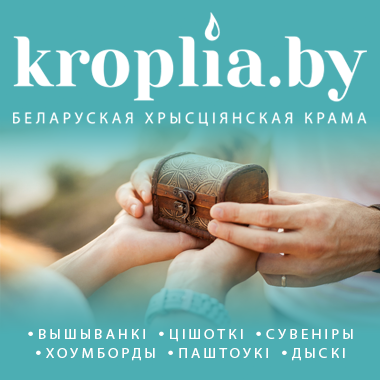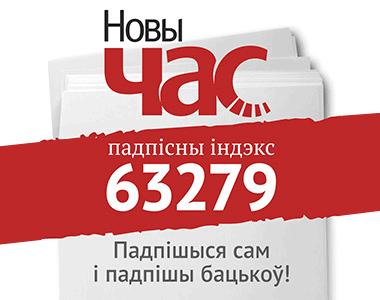History of BCD
At the beginning of the ХХ century, when Belarusian national revival movement activated, Belarusian Christian movement also started to develop, first of all among young Belarusian catholic clergymen: in the Vilnia Catholic Seminary and Catholic Ecclesiastic Academy in St.Petersburg. These educational establishments became the places where Belarusian circle societies were created.
During this very period of the revival movement and later, some catholic priests, natives of belarus, the ones who graduated from Vilnia Catholic Seminary and Catholic Ecclesiastic Academy in St.Petersburg, stood out by their national awareness. These were Adam Stankevich, Stanislau Hliakouski, Anton Shyshka, Kanstancin Stapovich, Jazep Hermanovich, Fabian Abrantovich, Vincent Hadleuski, Aliaksandar Astramovich and others.
Christian Democratic Union (May 1917 – November 1927)
In September 1915 , during the World War I, Western Belarus was occupied by the German troops. Starting from 1917, Belarusian Catholic Church found itself in the new conditions in the eastern and central parts of Belarus. Just after the February Revolution in 1917 in Russia, Temporary Government by its Decree granted the Catholic Church equal rights with the Orthodox Church. The Temporary Government allowed reinstating administrations of catholic bishopics. The Catholic Church was given back its property, the buildings that had been confiscated before, and the activity of monk institutions was allowed.
Religious activity was accompanied with civic and political activity. Back in the year 1915 in the western part of Belarus, occupied by German troops, a civic organization named “Christian Union” was created. Among its founders there were the Bishop of Vilnia E.Ron, catholic priests Vincent Hadleuski, and Aliaksandar Astramovich and others. Among the members of the “Christian Union there were representatives of the bourgeoisie, landlords, middle city class, workers and peasants. The organization had liberal-constitutional direction.
In May 1917, Belarusian clerical democratic national party – Christian Democratic Union – was created in Petrograd by clerical activists with the background of the intelligentsia who were close to Catholic Ecclesiastic Academy. Later the name was changed to Belarusian Christian Democracy (BChD). Its activity was soon transferred to Mensk, where since the year 1916, civic and political activity of the catholic clergymen was reactivated.
On May 24-26,1917 in Mensk cathedral catholic church, Mensk bishopic being revived, the Congress of the Belarusian catholic clergymen took place, with participation of 30 people. One of the organizers of the Congress, catholic priest Vincent Hadleuski, made two reports: on May 24 “Political-popular action of the catholic clergymen at present time in Belarus” and on May 25 “Creation of a Catholic Party”. Alongside these reports, the following issues were discussed at the Congress – reports made by catholic priest Adam Stankevich about Belarusian movement and its relations with the catholic church life and catholic activity, report made by catholic priest Fabian Abrantovich about educational activity, and others.
The Congress in Mensk formally completed creation of the Christian-Democratic party, which existed until July 1917. It was first called Belarusian Christian-Democratic Union (BChDU), then – Belarusian Christian Democracy. The Congress approved the following statements: organization of the Christian democratic party, belarusization of the catholic Church all over the territory of Belarus, longing (at that time) for broad autonomy of Belarus within the Russian Republic. The Congress also took the decisions about education of the clergymen-Belarusians in Belarusian, founding of Belarusian newspapers and magazines, books of catholic direction.
Representatives of the party were included into Belarusian National Committee, then – into the Great Belarusian Council. Belarusian Christian Democratic Union supported the act of March 25, 1918 which declared the independence of Belarus.
As a democratic organization, BChD was oriented to evolutionary way of social development and parliamentary forms of fighting. They protested against totalitarism – fascism and bolshevizm.
In the year 1918 the Catholic Seminary headed by Father Fabian Abrantovich was opened in Mensk. Almost all the students were Belarusians. Father F.Abrantovich tried to found Belarusian Catholic Academy in Mensk, but he could not achieve this aim due to establishment of the soviet power in December 1918.
After Riga agreement (1921) Belarusian Christian Democracy continued its activity at the territory of Western Belarus, which adjoined to Poland (the party office was in Vilnia). The party raised national awareness among the belarusian population of villages and provinces, appealed to defend the right for speaking Belarusian at schools and in the religious life. To increase their influence among the peasants Christian democrats established Belarusian Institute of Economics and Culture in the year 1926 in Vilnia.
In the same 1926 year Ramuald Jablzhykouski was appointed as metropolitan, Arch-Bishop of Vilnia. He started anti-Belarusian direction at his archbishopic straightaway. Cermons in Belarusian were forbidden, Belarusian catholic priests were transferred to territories with Polish population. Polonization increased also in Vilnia Ecclesiastic Seminary. R. Jablzhykouski forbade Belarusian catholics to be members of Belarusian Christian Democracy and disapproved the catholic newspaper “Belaruskaja Krynica” (“Belarusian Spring”).
Father Vincent Hadleuski was arrested twice for his national-religious activity and in 1927 he was sentenced to two years of imprisonment.
Belarusian Christian Democracy (November 1927 – September 1939)
On November 6,1927, in Vilnia, Christian Democratic activists, who gathered around the newspaper “Belaruskaja Krynica” (“Belarusian Spring”), issued by Adam Stankevich, conducted a founding Assembly of the party “Belarusian Christian Democracy”.
The 2nd program, approved by the Assembly, declared that: “BChD longs for independence of the Belarusian people at all their lands, united into an independent democratic republic”.
Since 1927, according to the amendments in the Charter, not only catholics could become the members of the party, but orthodoxies as well. This measure provided BChD with a possibility to become one of the leaders among the parties of Western Belarus.
The then invading Polish authorities couldn’t help being bothered by increasing of quantity of members of BChD. They put Belarusian Christian Democracy under special control after signing of agreement between Belarusian Institute of Economics and Culture and the Partnership of Belarusian School in the issue of fighting for the native language school, in February 1936. At that time there happened a division into democrats and conservatives inside the party, due to its reorganization into Belarusian National Unification. The conservatives lead by V.Hadleuski created an organization, which was named Belarusian National Front, and Belarusian National Unification was headed by Janka Pazniak.
After adjoining of Western Belarus to the USSR in 1939 the activity of parties was forbidden, many Christian democrats were repressed (among them Janka Pazniak, Adam Stankevich, Stanislau Hrynkevich, Fabian Abrantovich, Janka Shutovich, Jazep Hermanovich, Andrei Cikota), some continued their activity for the sake of their Motherland as long as they could, some emigrated.
In Summer 1941 the Arch-Bishop of Vilnia R. Jablzhykouski sent to Eastern Belarus from Vilnia catholic priests (Stanislau Hliakouski, Dzianis Malec, Piotar Tatarynovich, Kazimir Rybaltouski), whose task was to reinstate the activity of catholic churches. However, in December 1941, German authorities arrested catholic priests D.Malec and S.Hliakouski, and, most likely, they were shot.Catholic priests P.Tatarynovich and К.Rybaltouski were forced to leave Eastern Belarus. In December 1942 Father V.Hadleuski was arrested by Mensk SD in his office and tortured to death. Father K.Rybaltouski was shot by the nazi in July 1943.
BChD in Soviet times (September 1939- end of 1980ies)
During Soviet times activity of all the political parties, apart from the Communist Party of the Soviet Union, was forbidden. The Christian democratic ideas were kept by separate nationally oriented believers, who were forced to lead underground activity and deprived of the possibility to create the corresponding organizations.
Attempt to revive BChD at the beginning of the 1990ies.
At the beginning of the 90ies several Christian Democratic parties appeared simultaneously in the whirlpool of the national movement of Belarus – Belarusian Christian Democratic Union, Christian Democratic Choice, Belarusian Christian Democratic party. However, in their attempt to occupy their political niche, these parties couldn’t achieve broad support of the believers and patriots and became more of a sign of need for Christian democratic idea in Belarus.
Present-time Belarusian Christian Democracy (since the year 2005)
The initiative to revive BChD emerged among the former activists of the Young Front in the beginning of 2000ies. The initiative positioned itself as a force which bases its activity on Christian values and Belarusian patriotism. Unlike its predecessors, present-time BChD declares itself as inter-confessional party, oriented also to orthodox believers and protestants.
Organizational Committee of the party started activity in 2005. It included as democratic politicians-Christians, already well-known in Belarus, andnew civic leaders. Co-Chairmen of BChD are Paval Seviarynec, Heorhi Dmitruk, Vital Rymasheuski, Aliaksei Shein.
Founding Assembly
In the beginning of the year 2009 Organizational committee on creating of the party “Belarusian Christian Democracy” took the decision on the necessity to conduct the founding assembly and obtain the state registration of the party.
The delegates to the Assembly were elected all over the country at regional assemblies of BChD during January-February, 2009. Total quantity of elected delegates – 205 people.
The founding Assembly of the party Belarusian Christian Democracy took place on February28, 2009 in the Palace of Culture of the Mensk Automobile Plant in Mensk. The total quantity of participants of the Assembly – more than 600 in overall, including 204 delegates, guests and representatives of the media. The assembly approved the Program and the Charter of the Party and elected the directive board – National Council and Co-Chairmen.
On March 2009 the documents necessary for the state registration of the party “Belarusian Christian Democracy were filed to the Ministry of Justice. On May 12 the Ministry of Justice of Belarus refused to register the party.
According to the leaders of the party, this decision had no juridical basis. That is why the founders of the party “Belarusian Christian Democracy” (BChD) filed a claim to the Supreme Court regarding the decision of the Ministry of Justice.
On July 22, the judge of the Supreme Court left the decision of the Ministry of Justice unchanged. The leaders of BChD considered this decision politically motivated. Alongside with that, according to executive secretary of the party Dzianis Sadouski, BChD plans to continue its activity in spite of absence of state registration.
The decision about the second attempt of registration of the party was taken at the Assembly of the National Council, which took place on July 25, 2009 in Mensk. Later the date of the new Assembly was set – October 31, 2009.
Among the main aims of the present-time Belarusian Christian Democracy – democratic changes in Belarus, promotion of Christian values in the Belarusian society and defense of rights of believers.







